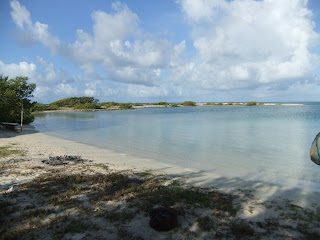i just finished reading "Three Cups of Tea" by Greg Mortenson for the second time and it is as powerful as the first time i read it. Greg has tried to discuss the realities of life in Afghanistan and Pakistan with our military leaders and failed even though they read his book and tell others to read it. Military training doesn't seem to allow them to consider building schools as a way to peace and understanding; or even as a method to diminish the influence madrassa's continue to have on those who have been terrorized by our bombs.
At a simple level good is what helps people and evil is what hurts people.
We all have the capacity to do both. We all have the capacity to understand what the barriers and divisions are that keep us apart.
In an ongoing effort to promote peace i decided to publish the UN Declaration on a Culture of Peace which is different from the Universal Declaration of Human Rights done in 1948. This one was created in 1999 and is much shorter and easier to absorb.
Article 1
A culture of peace is a set of values, attitudes, traditions and modes of behavior and ways of life based on:
1. Respect for life, ending of violence and promotion and practice of non-violence through education, dialogue and cooperation;
2. Full respect for the principles of sovereignty, territorial integrity and political independence of States and non-intervention in matters which are essentially within the domestic jurisdiction of any State, in accordance with the Charter of the United Nations and international law;
3. Full respect for and promotion of all human rights and fundamental freedoms;
4. Commitment to peaceful settlement of conflicts;
5. Efforts to meet the developmental and environmental needs of present and future generations;
6. Respect for and promotion of the right to development;
7. Respect for and promotion of equal rights and opportunities for women and men;
8. Respect for and promotion of the right of everyone to freedom of expression, opinion and information;
9. Adherence to the principles of freedom, justice, democracy, tolerance, solidarity, cooperation, pluralism, cultural diversity, dialogue and understanding at all levels of society and among nations; and fostered by an enabling national and international environment conducive to peace.
Article 2
Progress in the fuller development of a culture of peace comes about through values, attitudes, modes of behavior and ways of life conducive to the promotion of peace among individuals, groups and nations.
Article 3
The fuller development of a culture of peace is integrally linked to:
1. Promoting peaceful settlement of conflicts, mutual respect and understanding and international cooperation;
2. Complying with international obligations under the Charter of the United Nations and international law;
3. Promoting democracy, development and universal respect for and observance of all human rights and fundamental freedoms;
4. Enabling people at all levels to develop skills of dialogue, negotiation, consensus-building and peaceful resolution of differences;
5. Strengthening democratic institutions and ensuring full participation in the development process;
6. Eradicating poverty and illiteracy and reducing inequalities within and among nations;
7. Promoting sustainable economic and social development;
8. Eliminating all forms of discrimination against women through their empowerment and equal representation at all levels of decision-making;
9. Ensuring respect for and promotion and protection of the rights of children;
10. Ensuring free flow of information at all levels and enhancing access thereto;
11. Increasing transparency and accountability in governance;
12. Eliminating all forms of racism, racial discrimination, xenophobia and related intolerance;
13. Advancing understanding, tolerance and solidarity among all civilizations, peoples and cultures, including towards ethnic, religious and linguistic minorities;
14. Realizing fully the right of all peoples, including those living under colonial or other forms of alien domination or foreign occupation, to self-determination enshrined in the Charter of the United Nations and embodied in the International Covenants on Human Rights,/2 as well as in the Declaration on the Granting of Independence to Colonial Countries and Peoples contained in General Assembly resolution 1514 (XV) of 14 December 1960.
Article 4
Education at all levels is one of the principal means to build a culture of peace. In this context, human rights education is of particular importance.
Article 5
Governments have an essential role in promoting and strengthening a culture of peace.
Article 6
Civil society needs to be fully engaged in fuller development of a culture of peace.
Article 7
The educative and informative role of the media contributes to the promotion of a culture of peace.
Article 8
A key role in the promotion of a culture of peace belongs to parents, teachers, politicians, journalists, religious bodies and groups, intellectuals, those engaged in scientific, philosophical and creative and artistic activities, health and humanitarian workers, social workers, managers at various levels as well as to non-governmental organizations.
Article 9
The United Nations should continue to play a critical role in the promotion and strengthening of a culture of peace worldwide.
Peace
This picture is of a Wilson's Plover nest.
The parents use of coral tubing was quite beautiful to see.
Wednesday, May 26, 2010
Subscribe to:
Post Comments (Atom)






No comments:
Post a Comment